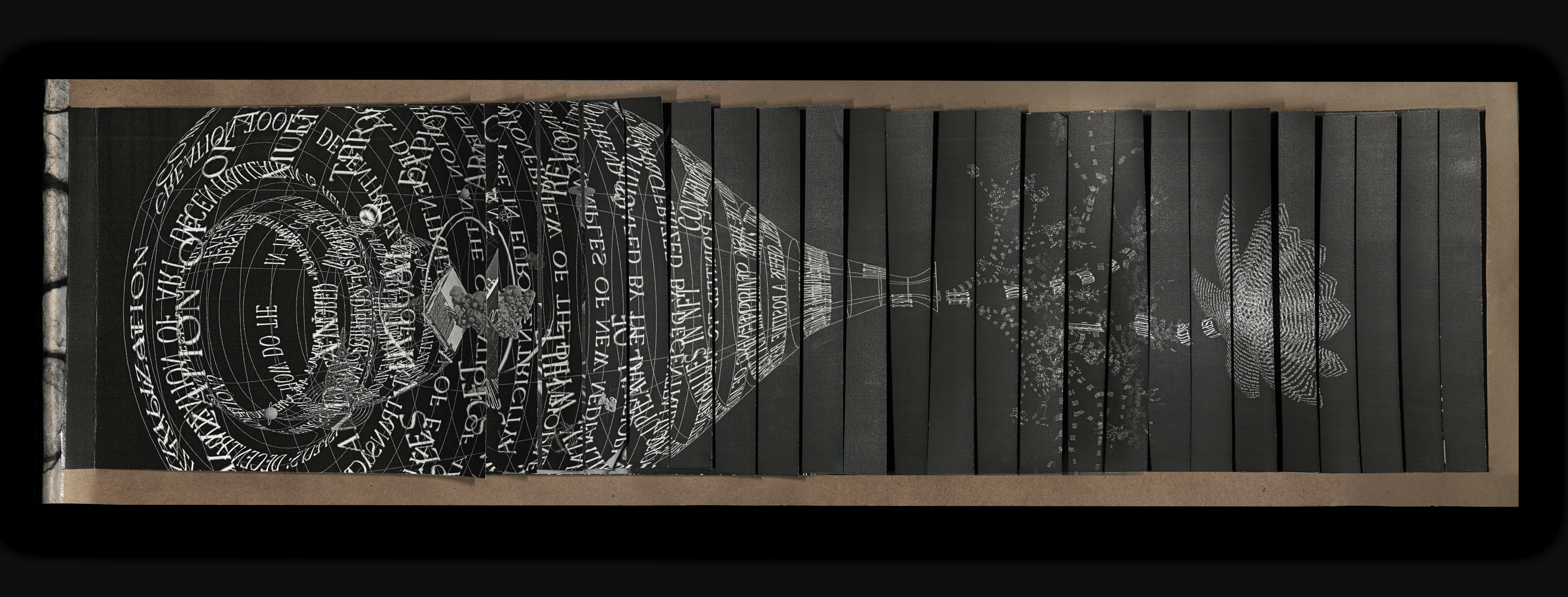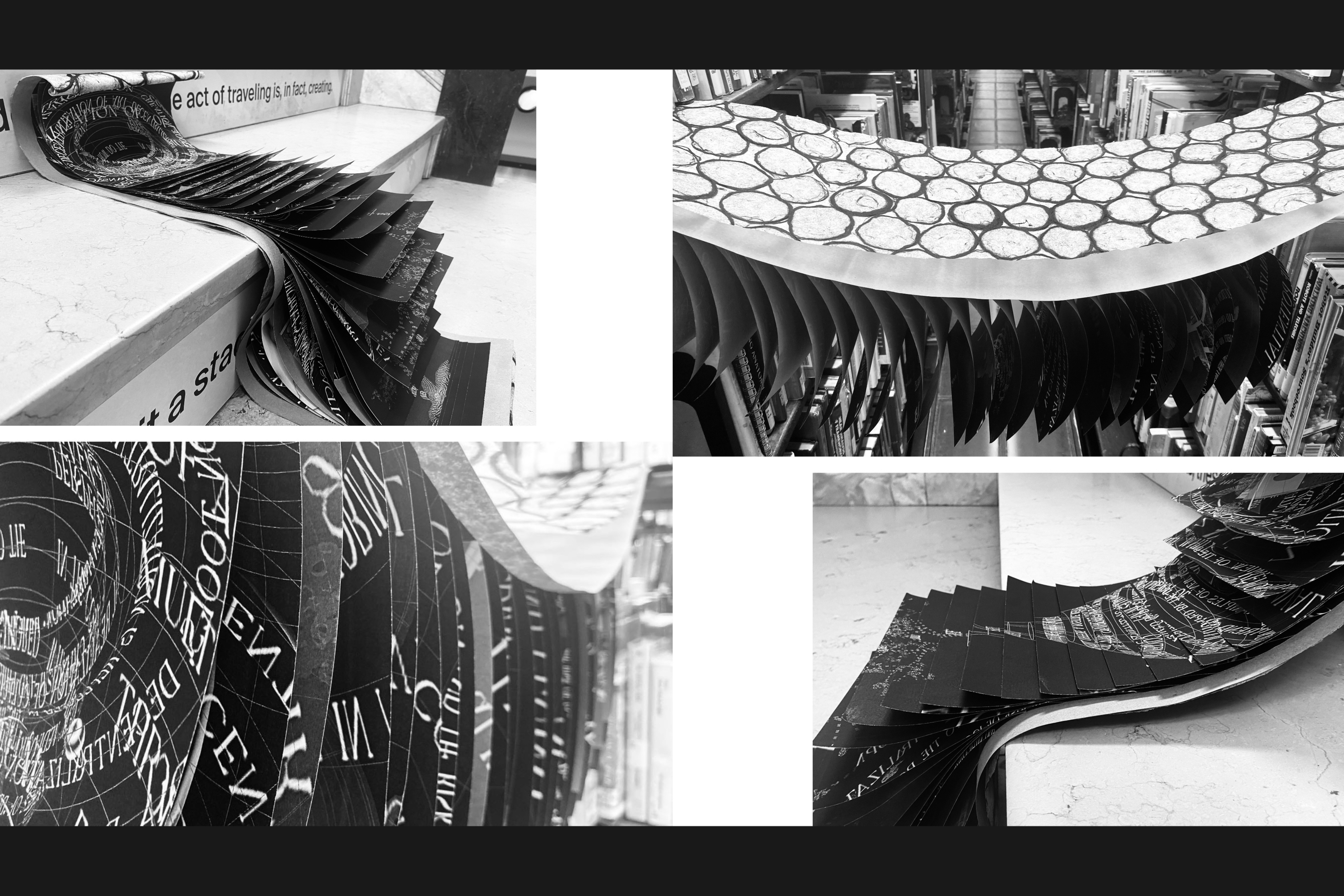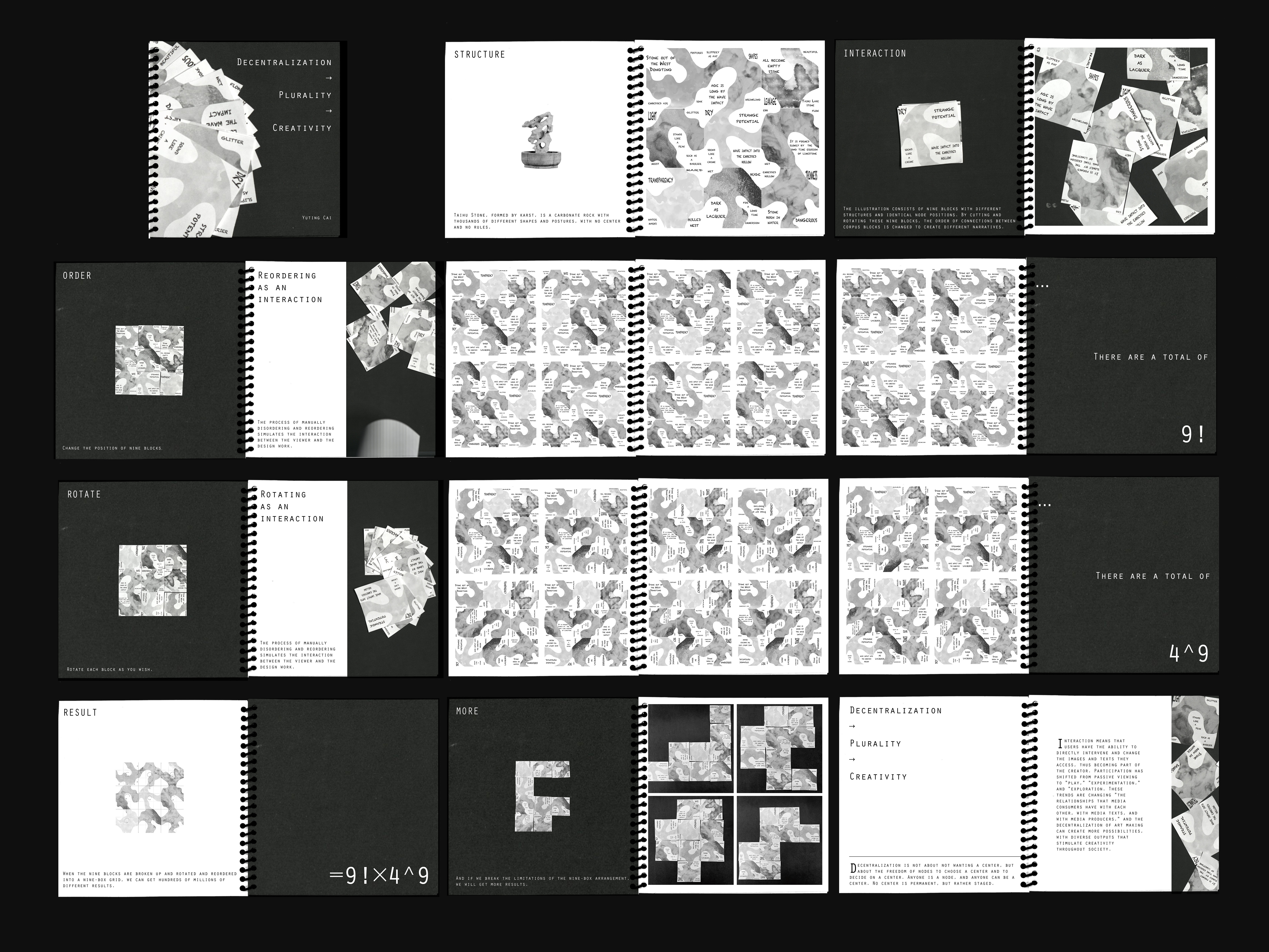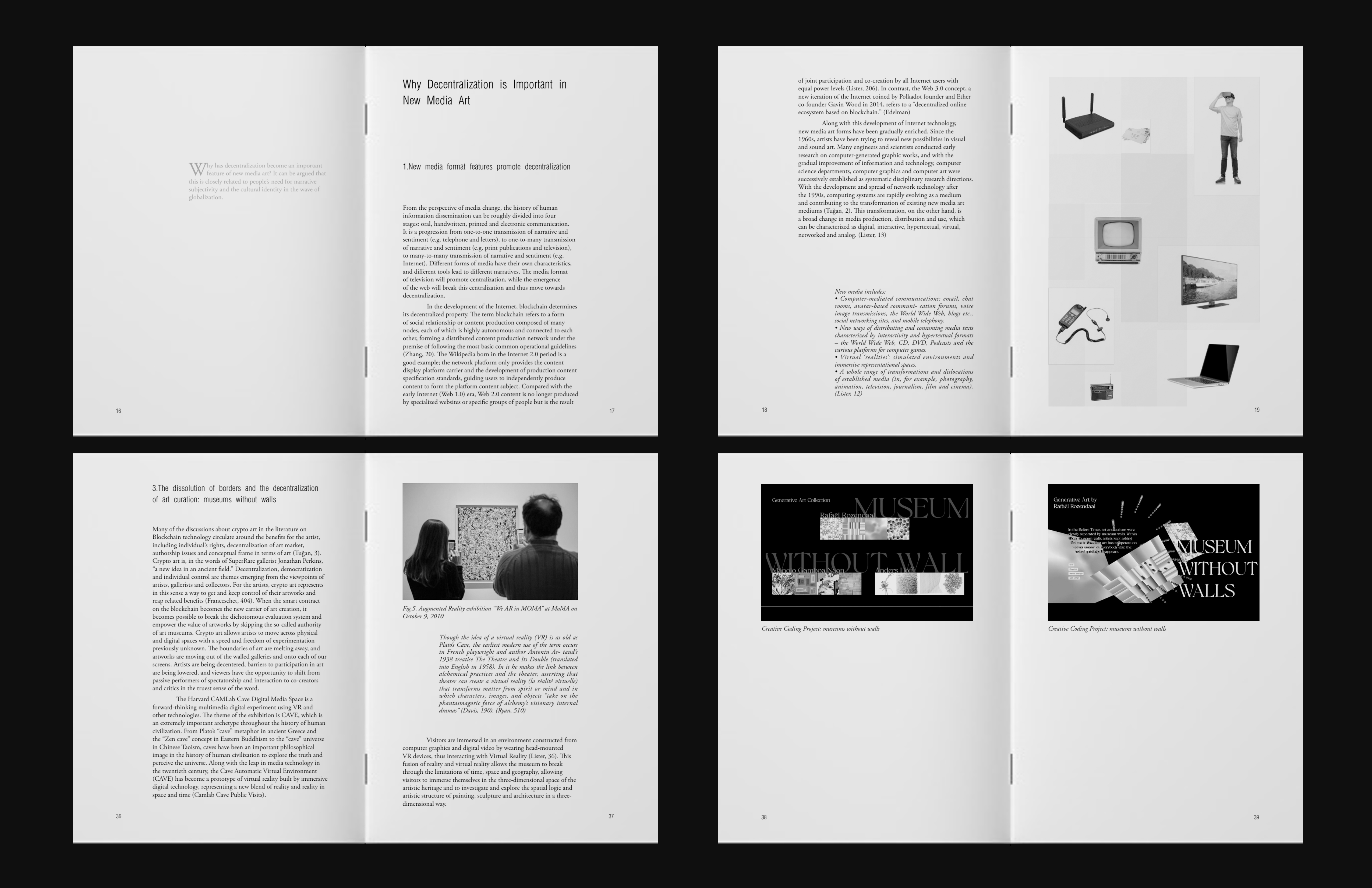Decentralization: The Future of Virtual Visual Culture and the Evolution of Narrative in New Media Art
Yuting Cai
New media art breaks the traditional narrative, leading to a juxtaposition of tradition and modernity - virtual and real. The abundance of media has promoted more diverse narrative forms and design methodologies, creating a diffuse landscape where multiple factors coexist and interact with the regional cultural environment. “Decentralization”, as one of the key words of the characteristics of new media art forms and contemporary art theory and practice, provides opportunities for better practice of cultural hybridity. The goal of art is now not to learn anything from artworks, but to be able to engage the audience, reproduce their own art, and tell their own stories. Virtual art has found a new impetus in the practice of “decentralization” and in the reflective innovation of contemporary art philosophy.
Stone, Meteorites, Universe
This is a VR project reflecting traditional Chinese aesthetics with the theme of decentralization.The inspiration is Chinese artist Tai Xiangzhou’s work. In his works, we can feel the connection between the rocks, the meteorites and the universe. The structure of “Taihu Stone” is probably the most romantic illustration of decentralization: naturally formed, unrestrained and cave-like in the forest. It is also a glimpse of traditional Chinese nature and art aesthetics: one flower, one world, one leaf, one Bodhi; seeing the self in itself, not from outside.
VR screen shot

Audiences experience VR at the exhibition

Poster card




Capstone book
The book design uses the traditional Chinese binding method - dragon scale binding. There is no set reading order for the entire atlas, and readers can start browsing from any page.

Cultural probe: To what extent can audience interaction enrich the design narrative?
The illustration consists of nine blocks with different structures and identical node positions. By cutting and rotating these nine blocks, the order of connections between corpus blocks is changed to create different narratives. When the nine blocks are broken up and rotated and reordered into a nine-box grid, we can get hundreds of millions of different results. And if we break the limitations of the nine-box arrangement, we will get more results. Therefore when participation has shifted from passive viewing to play and experience, the diversity of narratives is greatly enriched.

